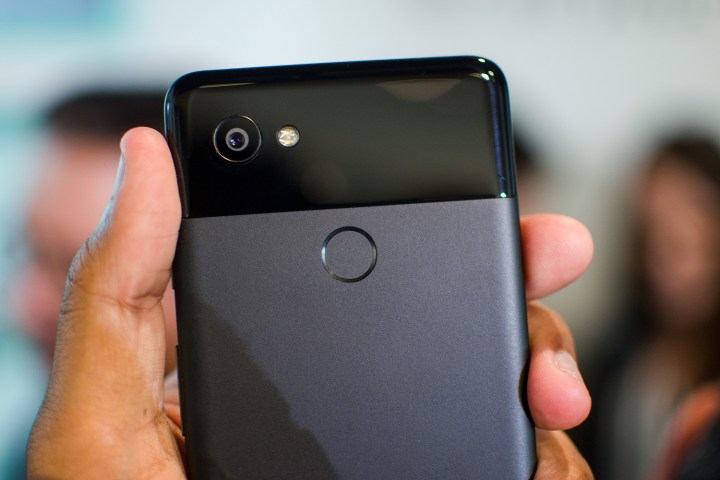
The freshly unveiled Pixel 2 and Pixel 2 XL look to be accomplished handsets, but certain models are already “Out of stock” on the Google Store, and many others now have longer delivery estimates from 2 to 3 weeks up to 6 to 7 weeks.
“I wish we had a few more of them to go around.”
We’ve been here before. On stage at the launch event, after expressing his pride over the original Pixel phones, Rick Osterloh, Google’s senior vice president of hardware, wisecracked, “I wish we had a few more of them to go around.”
Just three hours after the launch event, the same stock shortages are rearing their ugly heads. You have to wonder just how serious Google is about making its own smartphones, and when it will finally throw its full weight behind them.
Rise and fall of Google’s Nexus
The first phone designed by Google and actually released was the HTC-manufactured Nexus One, back in 2010. What began as a line of developer devices for Android app and game makers, and reference devices for phone manufacturers, gradually developed into something more. Early Nexus handsets were never advertised to the public, but the Nexus brand grew more popular over time.
Google seemed reluctant to throw its full weight behind it. The Nexus phones appeared bearing the mark of their makers — HTC, Samsung, LG, and Motorola — alongside a Nexus logo, rather than a Google one. As the driving force and developer behind the

Pushing an all-singing, all-dancing Google
But then, after six years and 14 devices, the Nexus line retired. Google never released sales figures and it was widely supposed that the Nexus phones never sold many units — at least nothing that would register on the radar of Samsung or Apple. Google never made a mainstream hit, but the best Nexus phones were definitely cult classics, and they gave people a taste of Google’s stock
Pixel rises from the ashes
Concern among fans that the slick, speedy, minimalist software experience and swift updates would be lost soon waned when the new Pixel was announced. Finally, Google was putting its own name on a phone, albeit manufactured by HTC. With
The Pixel wasn’t perfect, but it was an encouraging first step that whet the appetite for future Google phones.
And it did. The original Google Pixel is an excellent phone. While Samsung’s assault on bezels and curvaceous beauty captured the public imagination, high demand for the Pixel proved that others were willing to prioritize the software experience. The desire seemed to come as a surprise, and even as a Verizon exclusive, the Pixel was soon in short supply.
The Pixel wasn’t perfect, but it was an encouraging first step that whet the appetite for future Google phones. It got us imagining what Google might produce if it designed the hardware and software to blend seamlessly.
Limitations or limited ambition?
There was talk of a Google-designed chip, especially after Google hired Manu Gulati as Lead SoC (system-on-a-chip) architect. He led Apple’s chip division for close to eight years. But the Pixel 2 packs the same Qualcomm Snapdragon 835 as the rest of the

To shrink the bezels of the Pixel XL 2, Google drafted in LG, while the smaller Pixel 2 was manufactured by HTC. Mario Queiroz, Google’s vice president of product management, made a dig at Apple during the launch when he said, “We don’t reserve our best features for the larger device.” But there’s a discernible difference between the two Pixels: The XL doesn’t just have a bigger display, it’s framed by smaller bezels.
Consider also, that while the price difference between the iPhone 8 and the superior iPhone 8 Plus is just $100, which gets you a bigger, better display, and the dual camera, the price difference between the Pixel 2 and the XL is $200. We’re sure that has something to do with the fact that they have different manufacturers, but it highlights Google’s lack of control.
Take my money!
Another disappointment with the Pixel 2 launch is it’s a Verizon “exclusive” again. You can get a Pixel 2 for under $30 per month if you sign up to a two-year Verizon instalment plan, or the Pixel 2 XL for around $35 per month, but if you want to use either with another network, you’ll need to pay $650 or $850 up front or take financing from Google on the Google Store.
Not having the Pixel 2 in carrier stores limits its exposure and makes it more difficult for people to buy. If Google is serious about making mass market phones, it must strike deals with all the major carriers.
If you want to build a smartphone brand, the least you can do is let people buy your phones.
It also needs to look at the international market. Right now, the new Pixels are only available in Canada, Germany, Puerto Rico, the U.K, and the U.S. The original Pixels only added Australia to that list. If you’re based anywhere else, then you can forget about it, or rely on an expensive import.
Maybe Google is distracted by other unnecessary products, perhaps it still isn’t ready to commit fully to hardware, or maybe it just needs more time. Google’s acquisition of a select group from HTC’s
Osterloh recently told The Verge, “We don’t want it to be a niche thing,” and said he expects the Pixel to “become big, meaningful business for the company over time.”
The question is — how much time?
Although the software outshines the hardware, the Pixel phones Google has produced so far are great. Perhaps expecting Google to develop a hardware division capable of handling end-to-end
Steve Jobs has long garnered all the praise for the success of the iPhone, but it was the logistics expertise of Tim Cook that made Apple the most successful tech company in the world. Google should take note.